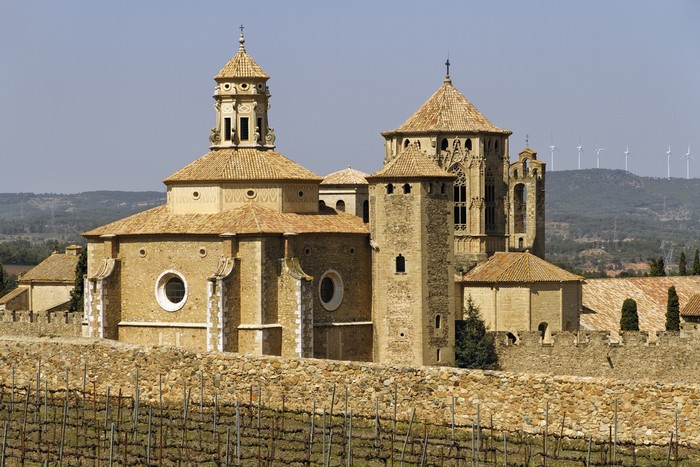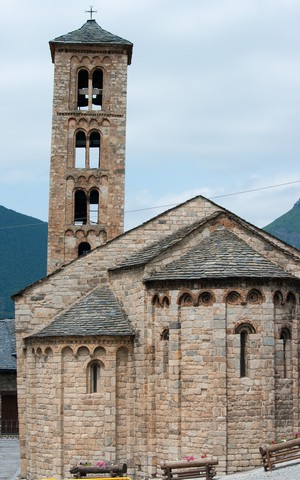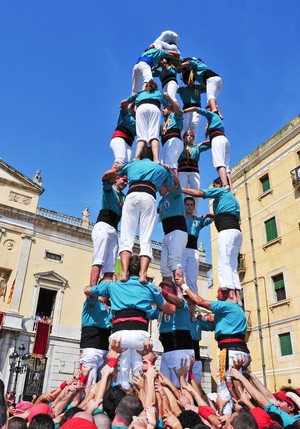Catalonia has a lot of things to visit, but there are 6 monumental sites that have been declared UNESCO’s World Heritage and 3 cultural elements declared Intangible Cultural Heritage.
Modernism is one of the identity marks of Catalonia, and this couldn’t be possible without Antoni Gaudí. His genius made possible the building of emblematic places like the Park Güell, the Casa Milà (also knows as La Pedrera), the Sagrada Familia or the Casa Batlló.
These buildings are a unique heritage with a great architectural value; Gaudí’s work was based on nature and spirituality, and he opened new ways in the spatial conception and designed very innovative architectural solutions, like the use of parabolic arches and inclined columns. That’s why UNESCO declared his work as World Heritage.
Lluís Domènech i Montaner was also a Modernist architect very important in Catalonia. The Palau de la Música Catalana and the Hospital de la Santa Creu i de Sant Pau are his most famous buildings, and both are recognized as World Heritage.
The Palau de la Música Catalana, built between 1905 and 1908, is one of the symbols of the Catalan Modernism, and it has a unique concert hall that is totally surprising. The Hospital de la Santa Creu i de Sant Pau was finished after the architect’s death, and it was a very modern architectural and urban approach that finally was unfinished (there are only 27 wings and Domènech i Montaner had planned 48 of them).

 Another emblematic place in Catalonia and also considered World Heritage because of its extraordinary artistic quality is the monastery of Poblet. The Santa María de Poblet’s abbey was founded in the 12th Century, and it’s one of the most important examples of the Cistercian architecture in the country.
Another emblematic place in Catalonia and also considered World Heritage because of its extraordinary artistic quality is the monastery of Poblet. The Santa María de Poblet’s abbey was founded in the 12th Century, and it’s one of the most important examples of the Cistercian architecture in the country.
Romanesque is another style that has great examples in Catalonia. The Vall de Boí has nine rural churches, all of them well preserved, which are a unique testimony of the medieval age and are perfectly integrated in their rural environment, which is nearly intact.
In these churches, there are some of the best murals of the country, a great reflection of the Romanesque painting, with spot colours, symbolism and abstraction. There are also some important carvings, like the Descent from the Cross located in prominent places in the churches.
 If we go on moving back in time, we find another wonder of Catalonia, the Tarraco ruins. The ancient Roman city has remains from the 3rd century BC to the 6th century AC, and it was declared World Heritage because of the great quality of the remains, which make the archaeological site an incomparable good.
If we go on moving back in time, we find another wonder of Catalonia, the Tarraco ruins. The ancient Roman city has remains from the 3rd century BC to the 6th century AC, and it was declared World Heritage because of the great quality of the remains, which make the archaeological site an incomparable good.
Some of the most spectacular places are the city walls (which are in very good condition for more than a kilometre), the two forums, the amphitheatre (one of the most famous places in Tarragona, with its wonderful location in front of the sea) and the circus.
Finally, if we go further back in time, we find the historic painting of the Mediterranean arch. There are 757 sites with historic paintings, and 60 of them are in Catalonia. It’s the biggest group of fields in Europe.
The paintings date from the years 6.000 to 1.000 BC, from the end of the Palaeolithic till the Bronze or Iron Age. They are settled in Aragón, Catalonia, Valencia, Castilla-La Mancha, Murcia and Andalusia.

In the intangible area, the Mediterranean diet was declared Intangible Cultural Heritage because of its antiquity and the health benefits that it produces, because it’s a simple, varied and balanced diet. In addition, it’s not only healthy, but it has a lot of important features, like its high social, cultural and ecological element.
Fruit, vegetables, bread, olive oil and wine are some of the basic elements in this diet, which is followed in most of the countries in the Mediterranean area. However, it’s in danger of extinction because of the changes in the current way of like. Iberians, Celts, Greeks, Romans, barbarians and Arabs followed this diet throughout history.
The castells, the human towers, are a unique practice in the world that is also considered an Intangible Cultural Heritage. Although it’s native to Tarragona (more specifically from Valls), this practice has extended through Catalonia in its 200 years of history.
16.000 castells are lifted every year in Catalonia; in the most spectacular cases, they arrive to 10 floors. They are always done in festive atmosphere, so they are very well received by Catalan public, which can also collaborate with them by joining the “pinya” (the lower part of the castell).
Finally, the Patum is a fiesta celebrated in Berga in the week of Corpus Christi. It has become a very important festivity because of its historical value (it comes from the 14th century). Although it has changed, it still has the most important elements, like the representation of symbolic characters, music and fire.